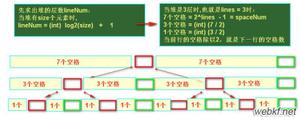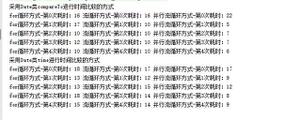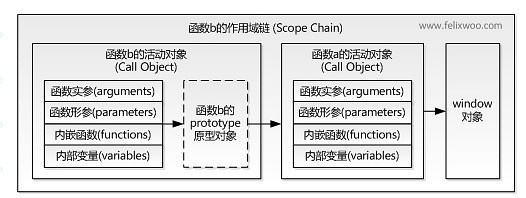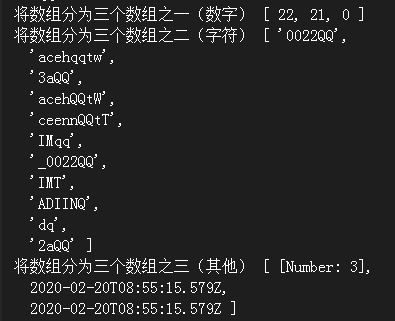【JS】「 面试三板斧 」代码分割(下)
背景

本文接上篇:
上文中, 我们了解了 chunks 三个字段的含义, 以及每个字段对应的行为。
今天是实践篇。
修改短短几行配置, 就达到了数百毫秒的优化效果。
正文
我的这个项目, 迭代一年多了, 中间打包配置也没没怎么改过, 毕竟也没什么问题, 速度也还可以。
刚好最近老板要搞指标, 让每个项目组分析性能数据, 给优化方案,做性能优化。
不分析不知道, 一分析, 很快啊, 马上就看出了问题, 看包分析结果:
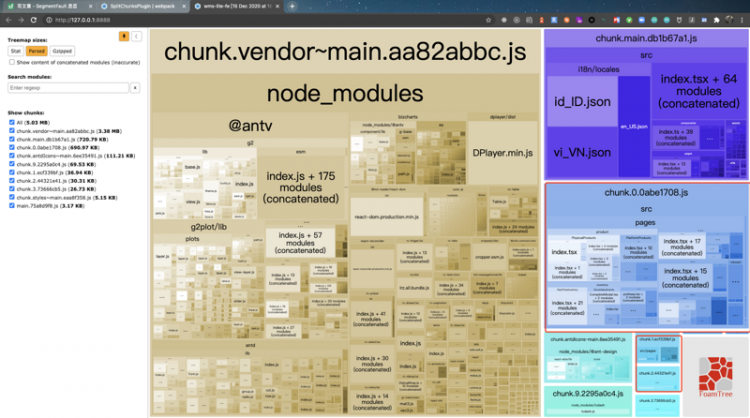
脑海里瞬间闪过一张图:

几乎所有的三方依赖都打在了一起, 写好的页面按路由加载也都打到了一起, 简直辣眼睛...
于是就去看了一下代码配置:
修正前
原始配置:
const OnBoard = React.lazy(() => import('@/pages/onboard'));const menuData = MenuItemTypes[] = [
{
title: 'onboard',
path: '/onboard',
meta: { showInMenu: false },
children: [
{
component: OnBoard,
// ...
},
// ...
]
},
// ...
];
const AppRouter = () => {// ...
const { el, routes } = getRoutes(menuData);
// ...
return (
<BasicLayout {...matchedRoute.meta}>
<Suspense fallback={<Spin />}>
<Route path="/" exact component={MyDashboard} />
{el}
</Suspense>
// ...
</BasicLayout>
);
};
const App: React.FC<> = () => {// ...
return <AppRouter />;
};
const AppContainer = () => (
<Router history={history}>
<Provider store={store}>
<Locale>
<App />
</Locale>
</Provider>
</Router>
);
看起来没什么问题。
看了一下 webpack 配置:
optimization: {splitChunks: {
chunks: 'all',
minSize: 30000,
minChunks: 1,
maxAsyncRequests: 5,
maxInitialRequests: 3,
cacheGroups: {
vendor: {
test: /[\\/]node_modules/,
enforce: true,
priority: 5,
},
antd: {
test: /[\\/]node_modules[\\/]antd[\\/]/,
priority: 10,
},
antdIcons: {
test: /[\\/]node_modules[\\/]@ant-design[\\/]/,
priority: 15,
},
styles: {
test: /\.(scss|css)$/,
minChunks: 1,
reuseExistingChunk: true,
enforce: true,
priority: 20,
},
},
},
},
看起来貌似也没什么问题。。。
build 之后 html 中的脚本, 乍一看好像也没毛病...
<script type="text/javascript"></script><script type="text/javascript"></script>
<script type="text/javascript"></script>
<script type="text/javascript"></script>
<script type="text/javascript"></script>
这种情况下, 修改 chunks 配置的对比:
chunks: all
包分析:
加载时间以及入口文件初始加载的脚本文件:
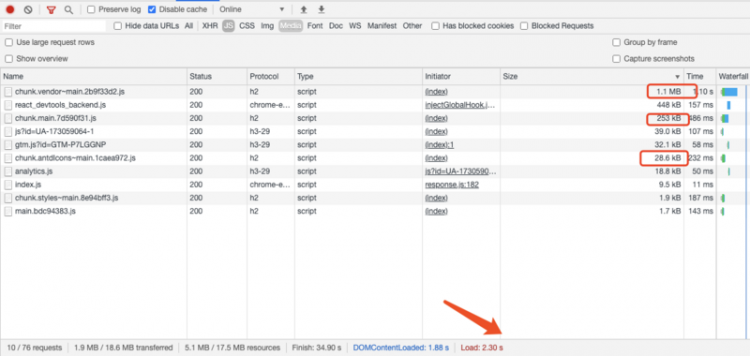
chunks: async:
<script type="text/javascript"></script><script type="text/javascript"img-wrap">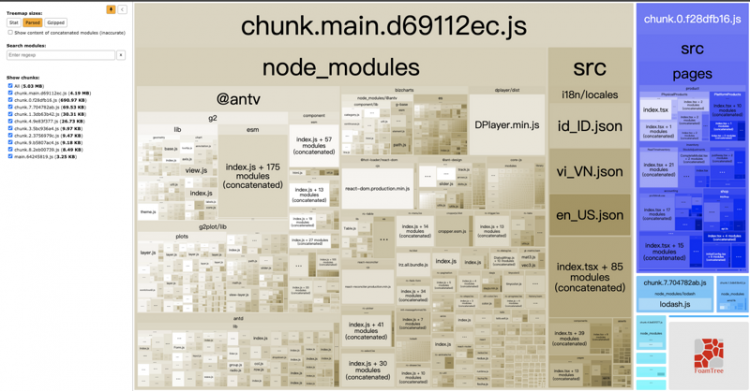
几乎没有什么变化, 一时间, 开始怀疑是不是受了其他配置的影响,就去仔细去找了一下, 果然:


速度修改了配置。

修正后:
chunks:all
optimization: {runtimeChunk: {
name: 'manifest',
},
splitChunks: {
chunks: 'all',
minSize: 30000,
minChunks: 1,
maxAsyncRequests: 5,
maxInitialRequests: 3,
cacheGroups: {
vendor: {
test: /[\\/]node_modules/,
enforce: true,
priority: 5,
},
antd: {
test: /[\\/]node_modules[\\/]antd[\\/]/,
priority: 15,
enforce: true,
},
antdIcons: {
test: /[\\/]node_modules[\\/]@ant-design[\\/]/,
priority: 15,
enforce: true,
},
antdV: {
test: /[\\/]node_modules[\\/]@antv[\\/]/,
priority: 30,
enforce: true,
},
bizcharts: {
test: /[\\/]node_modules[\\/]bizcharts[\\/]/,
priority: 20,
enforce: true,
},
dplayer: {
test: /[\\/]node_modules[\\/]dplayer[\\/]/,
priority: 25,
enforce: true,
},
styles: {
test: /\.(scss|css|less})$/,
minChunks: 1,
reuseExistingChunk: true,
enforce: true,
priority: 20,
},
'react-dom': {
test: /[\\/]node_modules[\\/]react-dom[\\/]/,
priority: 25,
enforce: true,
},
'rc-components': {
test: /([\\/]node_modules[\\/]rc-[a-zA-Z-]+[\\/])/,
priority: 25,
enforce: true,
},
},
},
},
很快啊, 马上就有了变化:
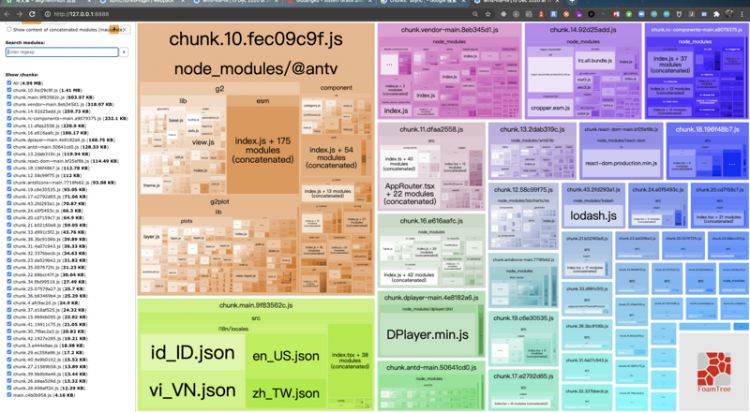
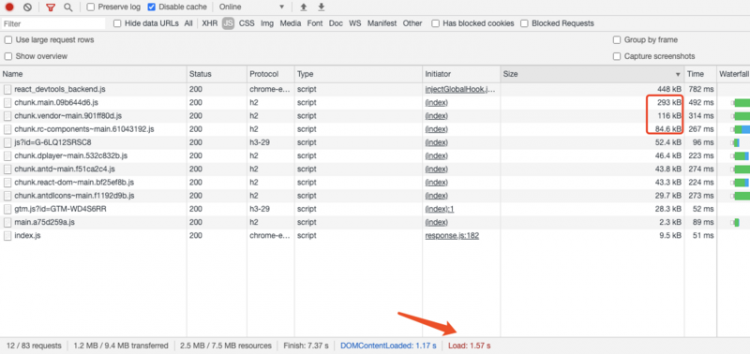

chunks: async
入口文件初始加载的脚本:

<script type="text/javascript"></script><script type="text/javascript"></script>
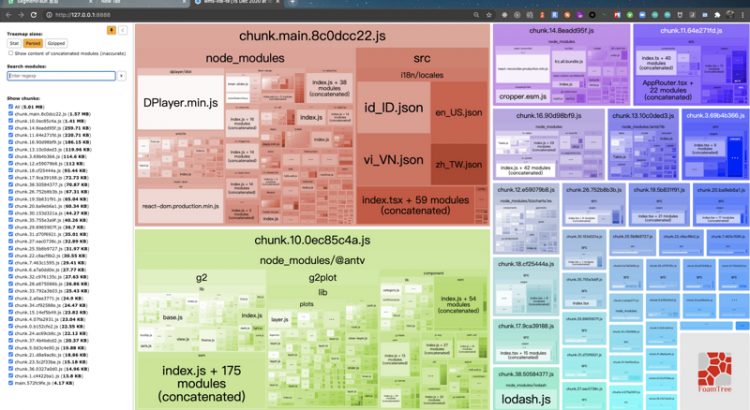
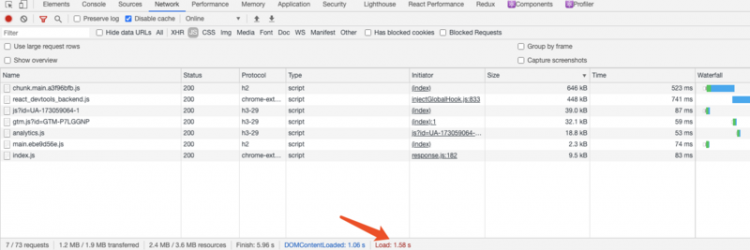
除了入口脚本数量的变化, 总体积, 加载时长, 几乎没有变化。
脚本数量的不同:
all: 8
async: 4
区别就是, 大文件的体积不同, 对这个大文件的加载时间有影响。
回头看, 这是一个 maxChunks 配置错误引发的血案。
修正配置之后, 立竿见影。
根据不同场景合理的拆分
根据你的情况, 可以选择更适合的打包策略。
all 的优势在于, 能共享代码。
选择这个模式, 如果你用的协议是h2, 并行下载,可能有比较好的效果。
async 会帮你合并一些包,但产生的请求也会减少。
需要根据实际情况做测试, 选择最适合的打包策略。
还有一种分割策略:
基于路由的分割 vs 基于组件的分割
打包的情况也会不同, 对比如下两幅图:

和:
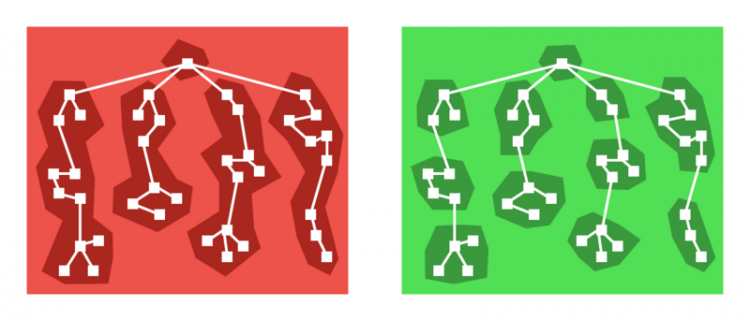
实际的场景中, 不会严格的区分这两种, 可以一起用。
比如, 一般情况下, 一个页面就是一个模块, 它的子页面, 也是一个模块, 而这两者是分开的。
也就是更贴近这个模型:
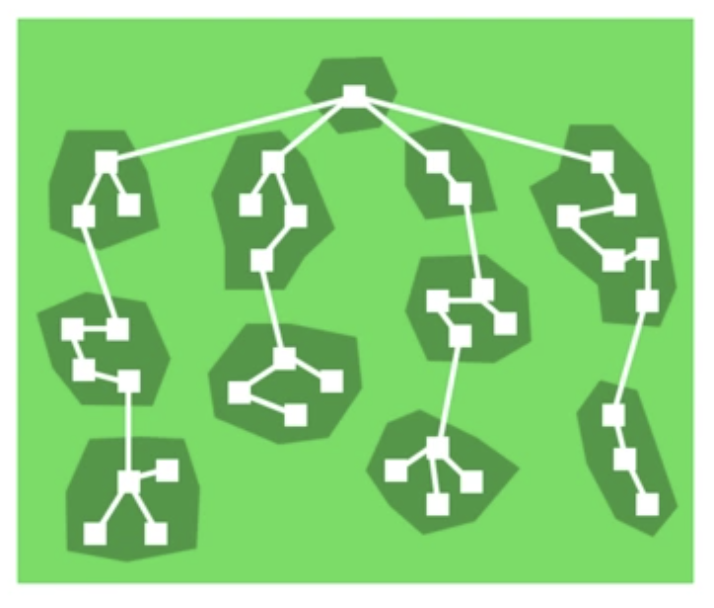
当然一些特殊的场景下, 也可以对某些功能组件去分割, 比如播放器组件, 代码块组件等。
这个时候的组件, 会单独成包, 使用的时候才去加载。
这是另一个话题了, 也有很多细节在里面, 本篇就不过多介绍。
总结
具体, 还是要根据不同的场景,选择不同的打包策略, 来达到最有效果。
webpack 也提供了详细的文档:
https://webpack.docschina.org...
实际用到的时候可以去看看。
内容就这么多,希望对大家有所启发。
谢谢。
以上是 【JS】「 面试三板斧 」代码分割(下) 的全部内容, 来源链接: utcz.com/a/92708.html

